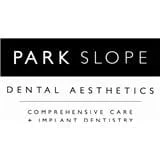
Which Will Be More Comfortable for You: Traditional Braces or Invisalign?
When it comes to problems with their teeth, most people choose treatments that are both effective and comfortable at the same time. The most common treatments for straightening crooked teeth, closing gaps between teeth, and correcting overbites are braces and Invisalign, respectively. Your smile will look much better with either one of these solutions, but the question that really matters is which one is more comfortable for you to use. This blog post will compare and contrast traditional braces with the clear aligner alternative known as Invisalign, with the goal of assisting you in selecting the treatment option that best meets your needs.
The standard treatment for teeth that are crooked is the use of braces. They are created using metal brackets that are affixed to the surface of each tooth and then linked together using a wire. Although they are quite efficient at straightening teeth, some people may find them painful, particularly in the first few days after having them. However, they are very effective at straightening teeth. Pain and soreness can be caused by the brackets and wires, which can irritate and rub against the soft tissue on the inside of your mouth. To alleviate this discomfort, you can cover the brackets in your orthodontic appliance with orthodontic wax; however, this is not a long-term solution.
On the other side, Invisalign is a more modern alternative to traditional braces. It entails wearing a succession of transparent aligners that have been specifically fabricated for your teeth. After being placed over your teeth, the aligners will gradually move them into the desired position as they are worn. They are quite comfortable, can be removed, and are so thin that they are almost undetectable. As opposed to braces, the aligners used in Invisalign are constructed of a smooth plastic material, so they do not irritate the inside of your mouth by rubbing against it. On the other hand, using Invisalign does call for self-control and dedication. The aligners have to be worn for a minimum of 22 hours per day, and the only times they can be removed are to eat, brush, and floss the teeth.
The level of care and maintenance that is necessary for braces and Invisalign are two of the most significant distinctions between the two options. When you have braces, you need to pay even closer attention to how well you take care of your teeth. It is imperative that you brush your teeth and braces after each meal in order to prevent food from becoming lodged between the brackets and wires of your orthodontic appliance. If you ignore this, you could end up with cavities, gum disease, and a prolonged recovery period after treatment. Invisalign aligners, on the other hand, can be removed prior to eating, which means that there are no dietary restrictions associated with their use. It is essential to clean your teeth thoroughly after each meal, both with your toothbrush and floss, before replacing your aligners.
The duration of the treatment is yet another important aspect that sets these two alternatives apart from one another. If you want to straighten your teeth with braces, you should be prepared to wear them for anywhere from one to three years, depending on how severe the misalignment is. Users of Invisalign often have shorter treatment timeframes, ranging anywhere from 12 to 18 months depending on the complexity of the individual's dental situation. Both traditional braces and Invisalign might result in varying total costs. In general, braces are a more cost-effective option than Invisalign due to the fact that their prices range from $2,000 to $6,000, whereas the cost of Invisalign can range anywhere from $3,500 to $8,000. Despite the fact that Invisalign may be more expensive, the comfort and lifestyle freedom that is provided by the clear aligners more than make up for the additional cost.
There is a big difference between braces and Invisalign in terms of the level of comfort they provide, the amount of care required, the amount of time it takes to complete the treatment, and the amount of money it costs. Your preferences, your lifestyle, and the way you take care of your teeth should all be considered when determining which choice is ideal for you. Before making a final decision with your orthodontic specialist about which of the two to choose, you should first examine your level of commitment, the appearance you want to achieve, and your financial situation. Last but not least, keep in mind that the pain you could feel throughout treatment is nothing compared to the final result of having a beautiful smile, which will be well worth it.
